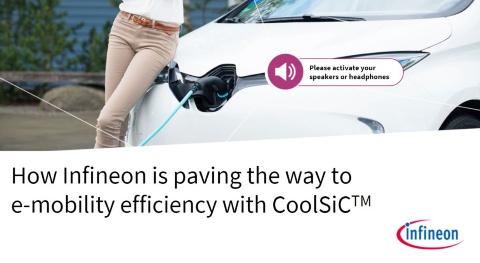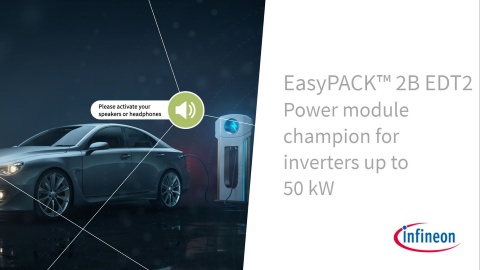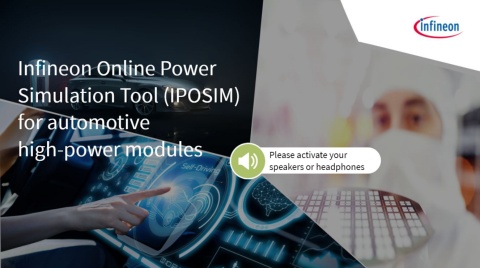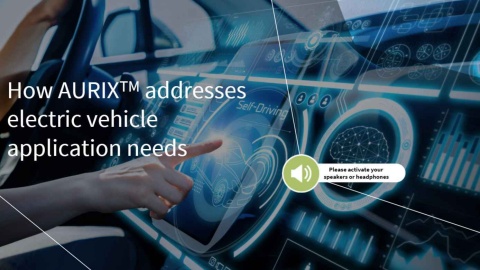Fuel-cell DC-DC boost converter
Next-generation efficiency and reliability for fuel-cell DC-DC converter applications
Next-generation chipset solutions are designed to optimize and support the design of fuel-cell DC-DC boost converters in electric drivetrain systems. With a focus on maintaining high levels of efficiency and reliability while remaining cost-effective, Infineon addresses the challenges faced by system designers, including the need to minimize converter dimensions.
Next-generation efficiency for fuel DC-DC converter applications
The fuel-cell DC-DC boost converter is an essential component in the functioning of fuel-cell electric vehicle drivetrain systems. In a fuel-cell electric drivetrain system, there is typically at least one DC-DC boost converter that connects the fuel-cell stack to the DC link voltage of the traction inverter and the high-voltage traction battery. The DC-DC converter for fuel-cell applications facilitates the flow of energy between these electrical sub-nets, accommodating a wide range of voltage levels.
- Voltage regulation
- Fault detection and protection
- Compact design
- High efficiency
- Cost-effective
- High reliability
Broad range of chipset solutions for fuel-cell DC-DCs
Infineon recognizes the importance of achieving high efficiency, reliability, and cost-effectiveness in all subsystems of fuel-cell electric vehicles. System designers face challenges in minimizing the dimensions of DC-DC converters while meeting all requirements. To address these challenges, Infineon provides a wide range of chipset solutions specifically designed to optimize and assist in the design of DC-DC converter for fuel-cell technology.
Reliable solutions for automotive applications
Infineon's DC-DC converters provide automotive applications with reliable and efficient power conversion solutions. With its automotive qualification, flexibility in conversion topologies, compact design, low switching losses, integration of isolation, high-performance microcontroller solutions, and evaluation kit availability, DC-DC converters streamline the development and enhance the performance of automotive systems.

In this training you will:
- Be familiar with silicon carbide MOSFET structures and their characteristics
- Get to know Infineon's CoolSiC™ MOSFET, its features, its improvements over a typical trench MOS and how it performs against its competitors

- Distinguish the features and benefits of Infineon’s CoolSiC™ solutions in target applications and identify Infineon’s fully scalable CoolSiC™ portfolio to meet this automotive market transition
- Explain the reasons for the increasing introduction of silicon carbide technology in the automotive applications
Driving a CoolSiC™ MOSFET is much easier than you think. This training will show you how it can be driven with a 0 V turn-off gate voltage.
With this training you will learn how to calculate a reference gate resistance value for your Silicon Carbide MOSFET, how to identify suitable gate driving ICs based on peak current and power dissipation requirements and to fine-tune the gate resistance value in laboratory environment based on worst case conditions.
Recognize the motivation behind paralleling of the SiC MOSFET modules, as well as key challenges and solutions for both gate driver and power layout design. Learn about optimized system loop inductance to minimize switching losses solution.
See how to optimize devices’ behavior in their applications with Infineon’s SPICE Compact Models for CoolSiC™ MOSFETs.

In this training you will:
- Identify the challenges posed by traction inverter applications in terms of system requirements, size, cost and time.
- Describe EasyPACK™ 2B EDT2’s distinctive features and explain how Infineon is able to meet customer needs. Especially in relation to quality and ramp-up capability.
In this video, you will focus on the comparison of the power handling capacity of IGBTs and SiC MOSFETs, Go through the different aspects that need to be considered when dimensioning an IGBT or a MOSFET for a certain application.

In this training you will:
- Get to know Infineon’s IPOSIM tool, specifically for an automotive electric vehicle inverter
- Discover the steps involved in simulating different parameters and comparing the results of different Infineon products to see which is the best fit for your application
Learn about the motivation behind paralleling SiC MOSFET modules, what are the key challenges and solutions for both gate driver and power layout design and get familiar with optimized system loop inductance to minimize switching losses.

Training topics:
- Get to know how AURIXTM is able to answer the needs of the electric vehicle market
- Recognize and explore how AURIX™ TC3xx addresses key electric vehicle challenges, and understand the main features of the AURIX™ TC3xx microcontroller



